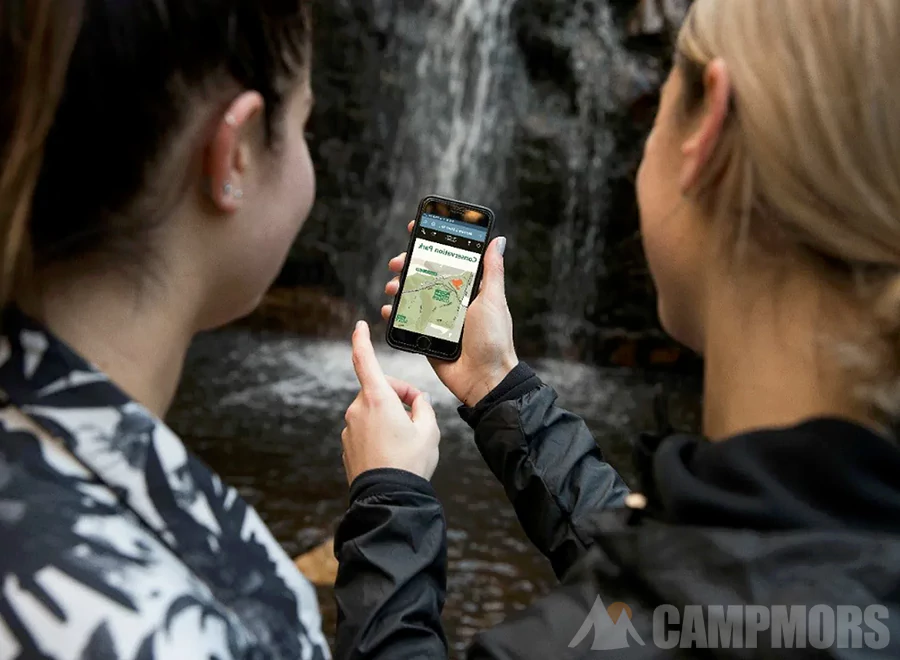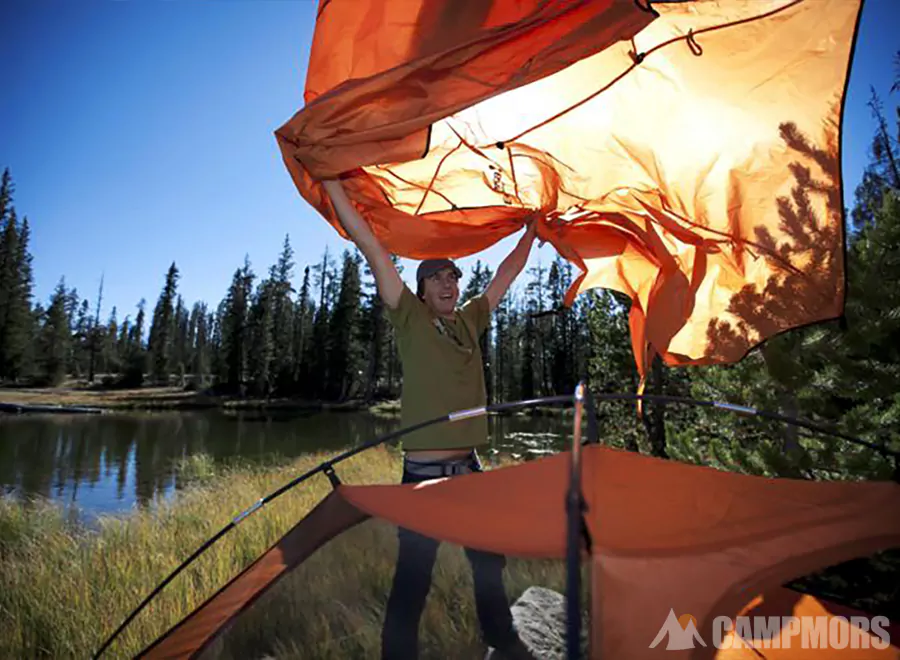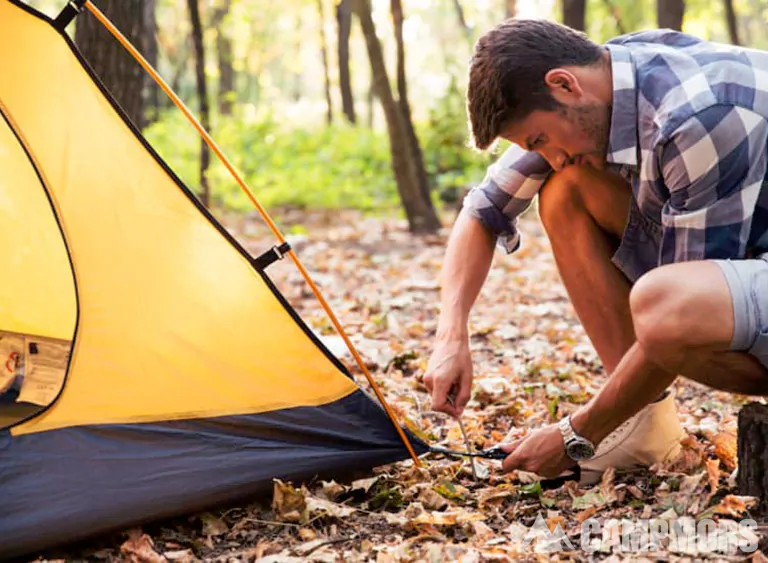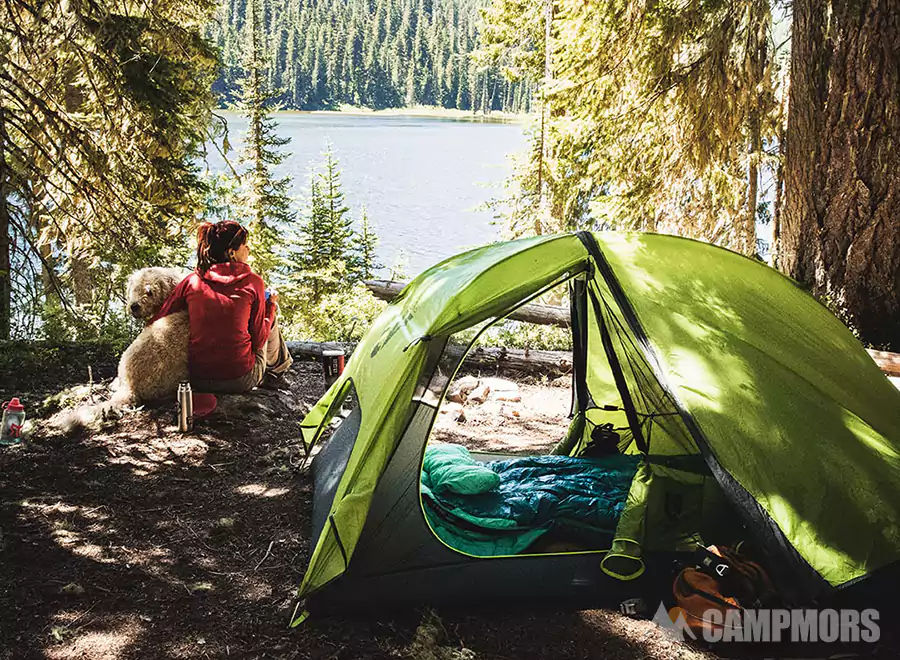
Sheng Dada
- March 10, 2020
How to choose the best site for camping in the wild to set up tents?
After a day of playing outdoors or hiking, having a comfortable and safe campsite ready can complete your camping trip. Low-lying areas prone to flooding, fallen trees, fully windy directions and noisy neighbors can disrupt a trip. But it can be avoided with a bit of preparation. Campmors below will give you some practical tips to help you have a great time camping in your RV, pitching a tent, or camping under the stars.
200 Feet Rule
If you want to set up a camp in the wild, be sure to follow the 200 foot rule. Set up camp more than 200 feet away from water sources such as lakes, ponds, rivers, etc. On the one hand, it can reserve space for itself in the event of sudden floods, while also preventing any ecological impact on the area. As well as 200 feet from any road to prevent hikers from wandering around your campsite at night if you don’t want to be bothered by strangers. It’s also a good rule of thumb to place your tent 200 feet from where you eat, bathe, use the toilet, and store food.
Find a Level And Aafe Ground
Everyone wants to find a safe, compact and level area to set up their camp. A solid surface is the first element. If you can’t find a perfectly horizontal position, you need to choose a suitable orientation according to your sleeping habits. For some people, raising the head can help with better sleep and less heat at night. For others, elevating the foot to reduce swelling can help after a long day of hiking (especially those with edema). Of course, the choice of ground may not matter to the person in the hammock. Just make sure there are no sharp objects under the hammock.
Set The Drainage Of The Camp
If you’re going to spend a night in a tent, be sure to pay attention to drainage. Don’t put yourself in low-lying potholes and avoid surrounding areas sloping towards your camp. No one wants to step out of their warm, cozy sleeping bag if there’s rain in the middle of the night. If precipitation is forecast, digging a moat or canal away from the tent can help.
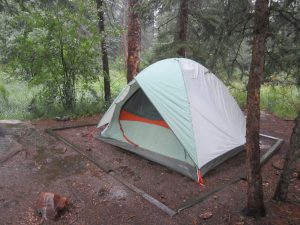
Combine Sun And Shade With Personal Preferences
Select the light-receiving surface or the backlight surface according to personal preference. Choose the light-receiving side of the season if you like the sun shining on your bed, and the back-lit side if you prefer not to be disturbed by the sun when you lie in. Of course, there are more tents with special vinyl treatment in campmors to better block light interference.
In midsummer we usually look for more trees and rocky terrain. in order to provide better shadows.
In winter, we usually pay attention to where the sun is rising and try to position our tent to get the sun as early as possible to help keep us warm in the morning.
Choose The Appropriate Entry And Exit Direction.
It doesn’t matter which way the door is opened when traveling alone, as an individual or as a couple. And when we’re family camping with kids, we usually have our tent door facing the kids’ tent door so we can keep an eye on them and see what they’re up to. When we are at scattered campsites with other campers, we try to keep the tent doors away from their campsites or use shelter such as trees for privacy.
Interesting Environment
Choosing an interesting and beautiful natural environment can be a big plus for our journey. Examples include lakesides, rocks, trees, and streams. Many established campgrounds have online photos or reviews to provide reference. Alternatively, check the web map to see if there is a current nearby, which will add a lot to your camping time. Of course, there is one downside to camping near a lake or slow-moving water: bugs. If mosquitoes are a problem, try to choose a breezy location.
Pay Attention To Sharp Objects
Before setting up the tent, remove sharp debris (rocks, pine cones, etc.) from the bottom of the tent. It can effectively prevent the sleeping pad from being punctured and provide a flat and comfortable sleep.
Protect Against Unhealthy Trees
Pay close attention to the health of the trees around the site. When we are pitching our tent in a forest and there is a storm, checking the health of the surrounding trees can save us and our family from harm. Also, for the hammock lovers. Healthy trees or other sturdy things can also hang your hammock better.
Check For High Traffic Areas Near You
Especially in concentrated campgrounds, avoid locations in high-traffic areas, such as bathrooms and bodies of water. No one wants to hear the bathroom door open and close all night while they sleep.
Remember Not To Leave Any Traces
Minimize your impact and leave no marks to protect the outdoors. Don’t forget to clear your trash as you proceed, don’t cut down vegetation and leave what you find. It is everyone’s responsibility to care for nature.
These tips above should help you choose a good campsite. lets go! Campmors wishes you a wonderful time.
Share :

